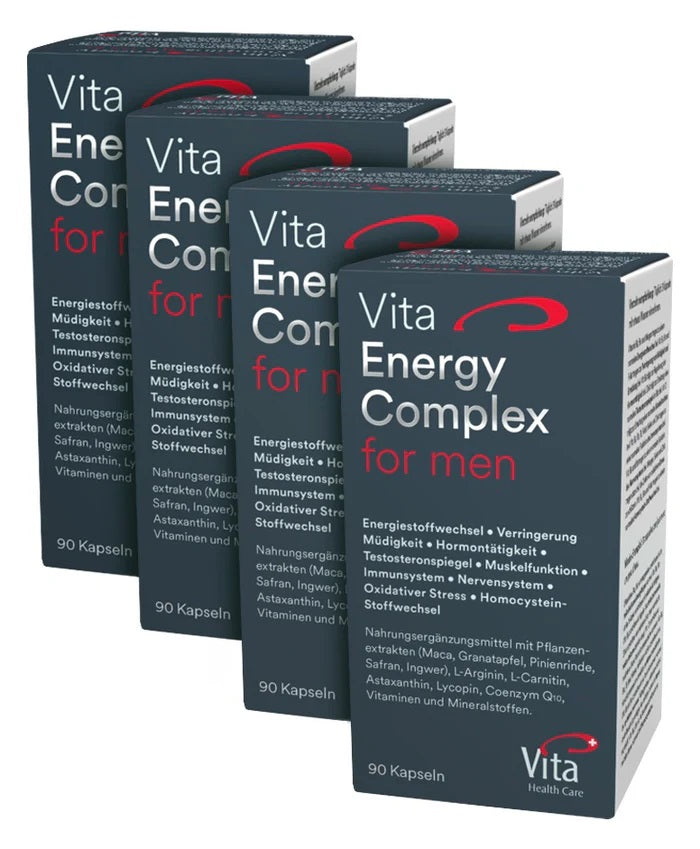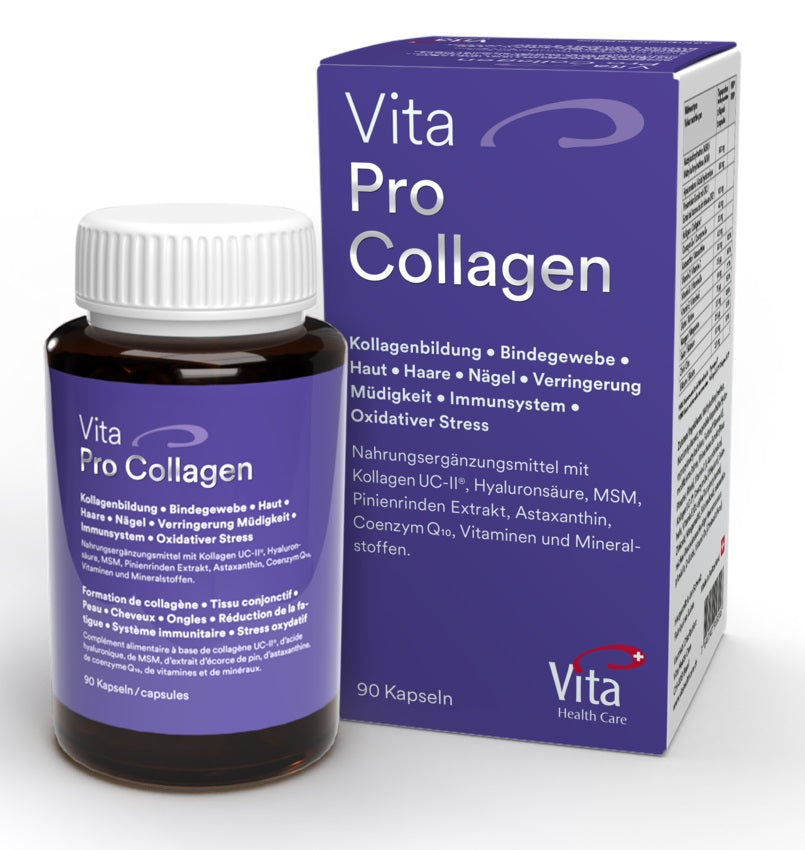



Vita Benefit Q10
Tax included. Shipping calculated at checkout
laktosefrei
für Diabetiker
glutenfrei
In stock - at your home in 3-4 working days
Vita Benefit Q10 plays an important role in the body's own energy production.
Is your diet balanced?
A balanced diet is crucial for a healthy lifestyle. But who actually manages to eat a truly healthy and balanced diet regularly? Probably very few. How healthy and vital we feel depends significantly on the foods we eat. Multivitamin products contain many different vitamins and minerals that provide us with essential nutrients.
But it's not that simple, unfortunately; a multivitamin and mineral supplement is no substitute for a balanced and varied diet and a healthy lifestyle. So why not try out a delicious new recipe and enjoy it?

Scope of application
Product details
Active ingredients
Mode of action
Nutritional information table
|
Vita Benefit Q10 |
||||
| Nutritional value per | 1 capsule | NRV * | ||
|
New: Beta-Carotene equivalent to Vit. A |
4.8 mg 800 µg |
100% | ||
| Vitamin B1 | 1.1 mg | 100% | ||
| Vitamin B2 | 1.4 mg | 100% | ||
| Vitamin B6 | 1.4 mg | 100% | ||
| Vitamin B12 | 2.5 µg | 100% | ||
| Vitamin C | 90 mg | 113% | ||
| New: Vitamin D | 20.0 µg | 400% | ||
| Vitamin E | 12 mg | 100% | ||
| Biotin | 50 µg | 100% | ||
| Folic acid | 360 µg | 180% | ||
| Niacin | 16 mg | 100% | ||
| Pantothenic acid | 6.0 mg | 100% | ||
| New: Magnesium | 58 mg | 15% | ||
| Iron | 10 mg | 71% | ||
| New: Zinc | 5.0 mg | 60% | ||
| Copper | 1.0 mg | 100% | ||
| Manganese | 1.3 mg | 65% | ||
| Selenium | 30 µg | 55% | ||
| Chrome | 7.5 µg | 19% | ||
| Molybdenum | 9.0 µg | 18% | ||
| Coenzyme Q10 | 30 mg | |||
| Green tea extract | 100 mg | |||
| New: Pepper Extract | 5.0 mg | |||
* NRV: Reference values for nutrient intake.
Allergy Information
ohne Gentechnik
ohne Konservierungsstoffe
für Diabetiker
ohne künstliche Farbstoffe
laktosefrei
glutenfrei
zuckerfrei
Media
Choose options




Vita Benefit Q10
Information about the responsible person (Information obligations regarding the GPSR Product Safety Regulation)
Friedrich Hosbach
Church Lane 3
79618 Rheinfelden (Baden)
GERMANY
Phone +49 (0)7623 50288
Email gpsr.friedrichhosbach@gmail.com


Lose weight
Body Shape Review
I have been taking the Body-Shape Drinks for about 5 weeks and am very surprised by the very positive results!
I take two drinks daily (usually in the morning and at noon). I've already lost 7 kilos , even though I sometimes eat something substantial on the weekend and have a glass of wine. In addition, I've already lost about 5 cm in waist circumference. It really does attack even the stubborn fat deposits.
By the way, I don't feel hungry in between meals either – the drinks are very filling and satisfying. I mix the powder with about 1 dl of water and 1.5 dl of almond milk, that's how I like it best. - Katja S. Basel, (May 2025)

Keeps you young, fit and vital.
For beauty from within.
With MSM, hyaluronic acid, pine bark extract with OPC, astaxanthin, biotin, Collagen UC-II™, vitamin C, D plus E and other active ingredients, it is new and also unique on the market in terms of composition, dosage and effect.
Over 300 studies demonstrate a wide range of applications, such as for healthy mucous membranes, strong hair, healthy nails, musculoskeletal pain, rheumatoid arthritis, muscle pain, fibromyalgia, tendinitis, bursitis, lower back pain, degenerative joint diseases, collagen and hyaluronic acid production, skin, acne, hyperpigmentation, allergies, diabetes, erectile dysfunction, and menopausal symptoms.

Subheading
Vita products
Vita preparations with multifunctional effects
Vita Health Care AG, Basel, is our exclusive partner for all nutritional supplements. All products were developed in Switzerland, based on scientific studies and incorporating experience from medical practice. Production also takes place in Switzerland.
Countless users (including professional athletes) benefit from the top quality of these unique Swiss products.
The main difference between Vita products and single-ingredient preparations lies in the complex formulation. Combination preparations are products that contain several active ingredients and are tailored to specific needs. The advantages of such complex products are obvious and also make economic sense.

Model Luisa Rossi on Vita Collagen Complex Plus
More products
Anti-aging
Discover
Our product areas
Experience reports
This is what our customers say.
After a few days, a significant improvement occurred, and after a month of consistently taking it, I am now completely pain-free, can put stress on my knee like I haven't been able to for years, and the mobility of my knee is as good as my healthy knee.
Esther S.
Thanks to your products, I avoided a major operation. I can continue my sporting activities.
Dr. MB
To make a long story short: GENIUS! I'm feeling much better all around. Neck, shoulder, elbow, and heel – everything has improved. With the heel, I don't even remember anymore whether I had pain on the left or right side. My shoulder and neck allow me to sleep through the night again. I also bought a new pillow and go for regular massages, which may have also helped.
Ritschi

Saving money
Multi-pack offers
Multi-packs for you and your community.
We offer the following discounts on the recommended retail price:
8% quantity discount for 2 packs
13% quantity discount for 3 packs
19% quantity discount for 4 packs

Anti-aging

Joints

immune system














